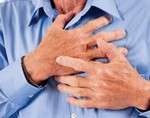It’s common knowledge that fruits and vegetables need proper washing to avoid foodborne illnesses. However, harmful bacteria can also contaminate frozen treats like ice cream, potentially leading to unpleasant and even serious health issues. Here’s what you need to know about how ice cream can cause diarrhea and other gastrointestinal problems.
How Melted Ice Cream Can Lead to Digestive Problems
Allowing a tub of ice cream to sit outside the freezer for an extended period can create a breeding ground for bacteria. As explained by Amreen Bashir, PhD, a biomedical science lecturer, the milky, sugary composition of ice cream is “the perfect petri dish” for bacteria like Listeria.
Even if ice cream has melted and been refrozen, the risk of Listeria growth remains. Refreezing doesn’t kill existing bacteria; it merely slows their growth. This is true for ice cream that has melted during manufacturing, shipping, or even when made at home.
Recognizing the Symptoms of Food Poisoning from Ice Cream
Ingesting harmful bacteria in spoiled or melted ice cream can result in food poisoning. Common symptoms include fever, diarrhea, vomiting, and abdominal cramps. The onset of these symptoms can vary, typically appearing within hours or days after consuming the contaminated ice cream.
While most cases of food poisoning resolve without medical intervention, individuals experiencing worsening symptoms or those with compromised immune systems should seek medical attention promptly.
Identifying Refrozen Ice Cream
When purchasing ice cream at the grocery store, look for potential signs that the product has melted and been refrozen. These indicators include:
- A firmer or sticky container: Refrozen condensation can leave a sticky residue.
- Large, crunchy crystals: This is often a sign of freezer burn.
It’s important to note that freezer burn, while affecting flavor, generally doesn’t pose a health risk.
Why Dairy Products Are Susceptible to Bacteria
Dairy products like ice cream are prone to developing harmful bacteria, such as Listeria, E. coli, and Salmonella, if they are unpasteurized or left at room temperature for too long. Pasteurization, a heat treatment process, kills harmful bacteria and significantly reduces the risk of illness.
Key Takeaways
- Spoiled or melted ice cream can cause diarrhea, nausea, vomiting, and fever due to bacterial contamination.
- Refreezing ice cream doesn’t eliminate bacteria; it only slows their growth.
- Look for signs of refreezing, such as a sticky container or large, crunchy crystals.
- Be mindful of the importance of pasteurization and proper storage temperatures to minimize the risk of foodborne illness.
Sources:
- Bashir A. The lesser-known causes of food poisoning that may ruin your dessert. The Conversation. July 2018.
- Symptoms of Listeria Infection. Centers for Disease Control and Prevention. February 2025.
- Rapid Response Center Freezing. K-State Research and Extension.
- Home Made Ice Cream. Minnesota Department of Health. September 2025.
- Alvarez V. Food Preservation: Pasteurization of Raw Milk for Home Consumption. Ohio State University Extension. May 2024.
- The Dangers of Raw Milk: Unpasteurized Milk Can Pose a Serious Health Risk. U.S. Food and Drug Administration. May 2024.
- Symptoms of Food Poisoning. Centers for Disease Control and Prevention. January 2025.
- Food Poisoning. Cleveland Clinic. May 2025.
- Protect Your Pint! 6 Easy Ways to Prevent Freezer Burn. Ben & Jerry’s. March 2020.
- What is freezer burn? U.S. Department of Agriculture. February 2025.
Editorial Review:
This article was medically reviewed by Yuying Luo, MD, a gastroenterologist, and written by Tehrene Firman.


























